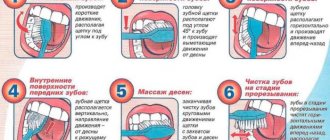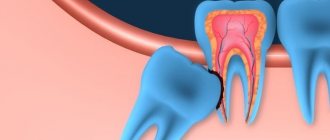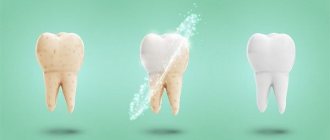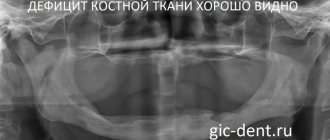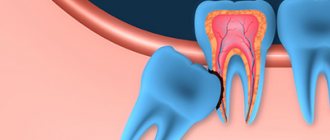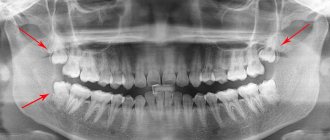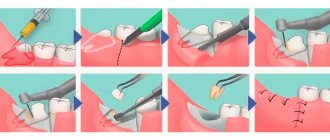Prices for various goods and services often differ significantly in different regions. For example, in June 2022, a kilogram of apples in Chukotka cost 302 rubles, and in Adygea - only 62 rubles. Similar differences are observed in the field of dental services. Due to the difference in tariffs, it is much more profitable for residents of some regions to visit a dentist in their neighbors than in their own city.
Implants
The cheapest place to place an implant (Alfa Bio or Nobel) is in Krasnoyarsk - for 15 thousand rubles. along with the crown. In neighboring Novosibirsk this service will cost 60 thousand rubles, in Irkutsk - 48 thousand.
In Rostov-on-Don, the cost of an implant (solid metal crown with installation) will be from 20 thousand rubles, in Omsk - from 19.5 thousand rubles, in Altai - from 20.5 thousand rubles, in Chelyabinsk - from 25 thousand rubles.
In the regions adjacent to Moscow, the cheapest implants are in Tula, where a crown along with installation will cost an average of about 30 thousand rubles.
You can install a DIO implant with a metal-ceramic crown in Crimea for 22.7 thousand rubles.
And the most expensive implants in Kazan are about 90 thousand rubles. along with the installation.
The main advantages of contacting “Novostom”
- Individual approach. The specialists of the Novostom clinic are ready to take into account all your wishes. Any measures are carried out only after a thorough examination, diagnosis, and study of individual characteristics.
- Full range of services. By contacting us, you can inexpensively receive professional help in the field of cleaning, whitening, restoration, and dental implantation. Our dentistry in Moscow is pleased to offer services to both children and adults.
- Comfort. During treatment and preparation for sessions, patients are surrounded by the attention of the staff. We care about the emotional state of our clients.
- Safety. Dentistry operates to the highest standards; All services are provided in sterile conditions in compliance with all sanitary and hygienic standards.
- Professionalism of specialists. Our doctors actively use modern developments and techniques. This allows you to cope with even the most serious problems.
Contact us!
Braces
In addition to implants, braces are also the cheapest in Krasnoyarsk. Installing a ceramic device for straightening teeth on one jaw here, together with annual maintenance (cleaning and tightening), will cost 10 thousand rubles.
In Perm, the same service costs 16.2 thousand rubles. The installation of self-adjusting ceramic braces here is almost 2 times more expensive - 31.7 thousand rubles. in year.
Installation and maintenance of braces in Irkutsk, Kemerovo, Kaliningrad, Simferopol costs approximately the same (25–27 thousand rubles).
In Kazan, the same service will cost from 38 thousand rubles. and higher.
And the most expensive place to get braces is in Cheboksary. Here, teeth straightening costs from 64 thousand rubles. in year. In Omsk and Stavropol – from 55 thousand rubles.
It is better and cheaper for Muscovites to get treatment in the regions
More and more Muscovites are going to plastic surgeons in other cities.
Photo: GLOBAL LOOK PRESS
WHERE FROM THE CAPITAL
“This week the whole family is going to Ryazan - I need fillings, my wife’s teeth need to be whitened, my children’s caries need to be treated,” a friend, a native Muscovite, tells me. “Is it really so profitable,” I wonder, “taking into account the cost of travel, a hotel for the night, and what about the quality of treatment?” However, travel patients are adamant: it's worth it.
“Domestic medical tourism is really actively developing in Russia: residents of some regions, especially capital cities, go to other regions for paid medical services,” confirms health expert, director of the Center for Social Economy David Melik-Guseinov. — I won’t lie, I myself prefer to have my teeth treated in my historical homeland — in Pyatigorsk.
Most often, Muscovites travel for dental services, ophthalmological services (vision correction operations, lens replacement for cataracts), as well as plastic surgeries and cosmetic procedures. “Several of my friends fly to Tyumen specifically to have plastic surgery,” Melik-Guseinov reveals the secret.
LESS CLINICS - MORE CONTROL
Experts say there are two main benefits. Firstly, the price: in the regions it can be several times lower, despite the fact that the materials and medical equipment are no worse than those in the capital. Thus, “dental tourists” have a chance to save 5-6 times! The difference is explained by lower rent for clinic premises, lower salaries of doctors in the regions and lower income of patients.
As for the quality of treatment, sometimes the level of dental services and plastic surgery in the regions even exceeds Moscow. “In other cities there are much fewer commercial clinics than in Moscow, they are visible, and government supervisory authorities monitor their work and quality of services more strictly,” explains David Melik-Guseinov. “In addition, in the regions there is less flow of paying patients, and the attitude towards them is often more attentive.”
GO TO THE DOCTOR AND SEE THE CITY
“Now the difference in prices has become especially obvious - due to the increase in fees for medical services in Moscow,” notes Kirill Ivanychev, head of the expert’s healthcare department. — For example, a consultation with a pediatrician in a paid clinic six months ago cost 800–1000 rubles, and now it costs 1300–1500 rubles. Moreover, we are talking about ordinary specialists, and not about candidates or doctors of science - their services are even more expensive. It is quite understandable that in such a situation, for reasons of economy, many will prefer to go to Yaroslavl or Nizhny Novgorod to see the city and improve their health.
Most often, Muscovites choose a clinic in another region on the recommendation of friends or acquaintances. They also often rely on Internet forums with reviews of medical centers.
STAY IN TOUCH
Medical tourism also has its disadvantages: travel costs, hotel accommodation, if there are no friends or relatives with whom you can stay. “A trip to a neighboring region will take much more time than a trip to the clinic in your city,” reminds Kirill Ivanychev. “And one more important point: if the implanted tooth suddenly becomes inflamed, you will have to return to Tver or Ryazan, or, most likely, go to an expensive paid specialist where you live.”
BY THE WAY
In the near future, several Internet portals will appear in Russia, where it will be possible to find out and compare prices for common paid medical services in different regions - just as we are now looking for the cheapest air tickets.
ON A NOTE
What's in Moscow?
The capital has the most advanced and accurate medical equipment for diagnostics, so if possible, it is better to undergo examinations and tests, especially in complex cases, in Moscow, experts advise.
Do you have experience traveling to other cities for treatment?
Artistic restoration
The average cost of artistic restoration is about 4–5 thousand rubles. Such prices are in Kirov, Cheboksary, Kaliningrad, Krasnoyarsk, Chelyabinsk, Kemerovo, Kursk, Penza, Volgograd, Salekhard, and Kamchatka.
The cheapest place to restore a tooth is in Barnaul (1.4 thousand rubles), Irkutsk and Stavropol (2 thousand rubles), Rostov (2–2.5 thousand rubles), Kazan (2.5 thousand rubles) . The most expensive place (8.8 thousand rubles) is in Novosibirsk.
- Related Posts
- How to save money on dental treatment: 8 ways
- Maximum tax deduction when purchasing an apartment
- How to protect your bank card when shopping online
About dental tours
Citizens remember dental tourism every time they have to save money. According to the analytical center of the medical journal Vademecum, in January, dental clinics raised prices by an average of 30%, explaining this by the rise in prices of imported consumables. Thus, in Moscow, the cost of installing a filling has risen on average by 19% (from 2,100 to 2,500), cleaning - by 7% (from 5,800 to 6,200), whitening - by 11% (from 4,500 to 5,000).
Dental tourism as a phenomenon is well known in different countries of the world: Austrian, German and British pensioners go to Hungary, Slovakia, Slovenia, Romania and Poland for dental treatment, Americans and Canadians - to Peru and Mexico, Australians - to Thailand, Uruguayans - to Argentina.
In dentistry, the cost of a service consists of the cost of renting premises, doctors’ salaries and consumables. And if the cost of materials is approximately the same for everyone, then the level of salaries (even for doctors of the same qualifications) and the rental price in different cities can differ significantly.
Muscovites surveyed by The Village go to dentists in Klin, Ryazan, Odessa, Lvov, Kiev, Istanbul, Smolensk, Minsk, Volgograd, Zheleznodorozhny, Tula, Tver, Riga, Krasnodar, Yekaterinburg, Omsk and Novosibirsk. Usually they turn to dentists in a city where they already have to travel regularly (for example, to visit close relatives). There are also those who like to combine vacation with visiting doctors: for example, before the Ukrainian conflict it was popular to get treatment in Odessa, Kyiv, Simferopol and Lvov.
“I often came across people who were treated in Turkey, Palestine, Egypt, and the United Arab Emirates,” says dentist Igor Lemberg, Ph.D., Associate Professor of the Department of Dentistry and Organization of Dental Care, Scientific Center at the State Medical University of the Presidential Administration of the Russian Federation, Colgate Total expert. — People don’t go to clinics in Israel, Germany or the USA, which are world leaders in dentistry. They go where it’s fast and cheap.” The most popular destinations where Muscovites go specifically because of the dentist, and not because of their mother, are Ryazan and Minsk.
Dental restoration methods: direct and indirect
Direct artistic restoration of teeth using the latest generation composite material. The procedure is performed on the patient's first visit. The tooth shape is created with special tools to form the complete anatomy. In 1-1.5 hours you will leave us with a new, beautiful smile!
Indirect aesthetic restoration of teeth. It is performed using veneers or inlays. These structures are made in our own laboratory using ultra-precise casts. Thanks to this, maximum predictability of the result is achieved.
Direct restoration of teeth with composite material (filling)
Direct composite restoration is performed using the latest generation filling restoration material (photopolymer). It is carried out immediately, at the first visit to the dentist’s office. Today, this is the fastest and most affordable option for removing minor defects (chips, crevices, carious destruction, etc.).
Artistic restoration of teeth using the direct method consists of the following stages:
- Free consultation and examination (including x-ray).
- Coordination of the treatment plan (selection of material, taking into account the color of the restored fragment).
- Professional oral hygiene (all plaque is removed from tooth surfaces for better adhesion).
- Anesthesia (for maximum patient comfort during the procedure).
- Isolation of an incisor or molar (installation of a rubber dam).
- Degreasing the tooth surface with special compounds and applying adhesive (glue).
- Application of photopolymer (layer-by-layer).
- Correction, grinding and polishing.
The service life of such a restoration is 3-4 years.
Important! To ensure that after restoration with a composite filling material it does not lose its original shade, it is necessary to visit the dentist’s office 2 times a year and undergo a comprehensive procedure for professional oral hygiene.
Direct aesthetic restoration of teeth - advantages and disadvantages
Advantages
- Relatively inexpensive. In our clinic, the price for such a service starts from 4,500 rubles
- High aesthetic results are guaranteed.
- Treatment is carried out in 1 visit.
- Composite materials can be repaired and replaced.
- The procedure is so safe that it is recommended even for children.
- A universal solution that eliminates the following problems: caries, irregular tooth shape and color.
Flaws
- Short service life - only 3-4 years
- In the absence of proper oral hygiene, the composite absorbs coloring pigments, which leads to loss of shine and its highlighting against the background of other teeth.
